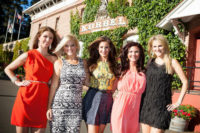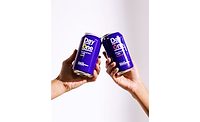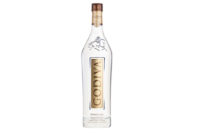After ringing in the New Year with a glass of Champagne or sparkling wine, there’s no better time than the present to take a look at the future of this growing segment. And according to New York-based global market research firm TNS, the sub-category has a lot to look forward to this year.
Despite the challenging economic environment, consumers continue to indulge in the “finer things,” TNS reports. An independent global survey of more than 39,000 people in 17 markets reveals that a combination of increased spending among current sparkling wine drinkers and new drinkers in the developing world is presenting manufacturers with an opportunity to entice consumers away from traditional alcohol favorites.
For instance, Purchase, N.Y.-based Pernod Ricard USA launched Absolut Tune this past fall. The hybrid spirit combines Absolut vodka with a Sauvignon Blanc sparkling wine from New Zealand to reach more channels. Around the same time, Deming, N.M.-based Southwest Wines added three new varieties to its Mimosa alcohol line: Pomegranate, Mango and Pineapple. In the early summer, Serge Imports LLC, Manalapan, N.J., launched Exclusiv Rosé Vodka, which merges raspberry vodka and Moscato Rosé wine for a sweet flavor profile, the company says. According to Chicago-based market research firm Mintel’s Global New Products Database, 48 Champagne and sparkling wine beverages launched from January to November 2012.
Champagne and other sparkling wines could increase their overall share of total drinking occasions from 5.1 to 7.8 percent if all those who wanted to drink them were able to, according to TNS. In the United States, there is potential for this share to grow from 3.5 to 6.5 percent as consumers buy into these drinks for their taste and sophistication and the indulgence they afford, TNS says.
“While we can see a huge worldwide appetite to drink more sparkling wine and Champagne, most people are still held back by cost,” said Jan Hofmeyr, chief researcher of behavior change at TNS, in a statement. “These drinks are perceived as indulgences, enjoyed mainly on special occasions. The good news for winemakers is that people consider sparkling wines to both taste better and offer greater enjoyment than other alcoholic drinks. So, if affordable sparkling wines can be made more accessible and be positioned as a drink for celebrating life rather than only special occasions, the sector has a sparkling future.”
Freschello USA, Mt. Clemens, Mich., recently launched a line of affordable sparkling wines in the United States. Originally made popular in Italy, Freschello Frizzante wines are low in calories, according to the company. A 750-ml bottle retails for approximately $5.99.
“The study does not indicate that consumers plan to increase their alcohol consumption overall, more that they would like to drink sparkling wines more regularly,” Hofmeyr clarified. “Manufacturers of other alcoholic drinks should take note, as they will need to build loyalty and commitment to ensure their own market share is not affected by this desire to drink more fizz.” BI









